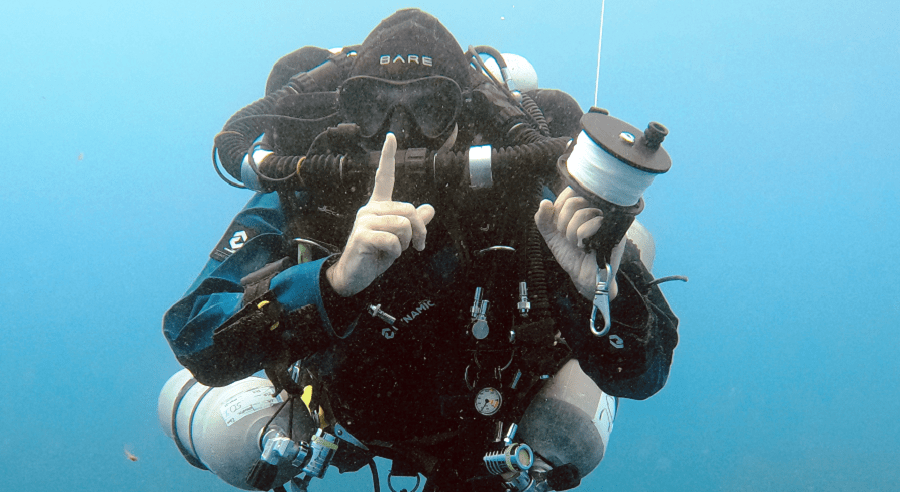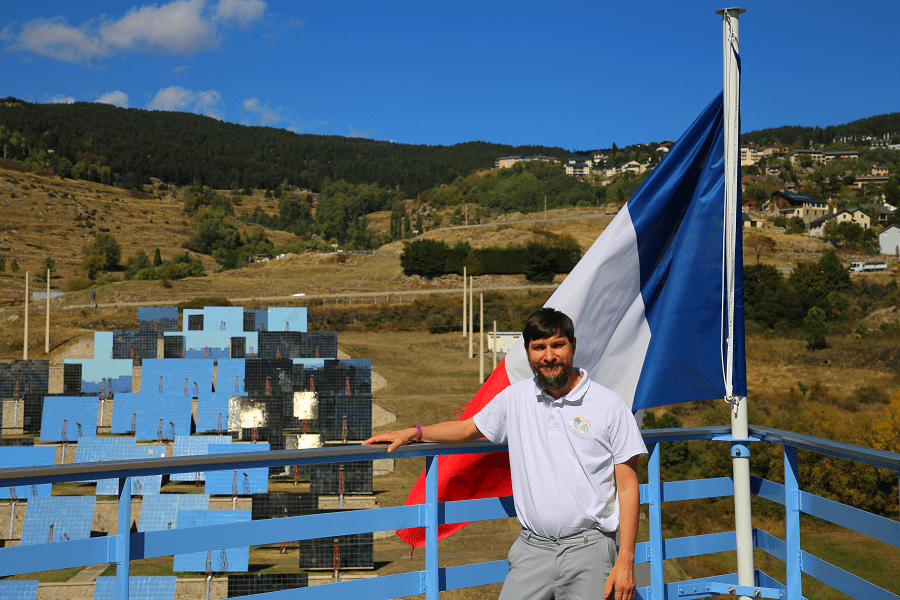
Alexander Nikolaevich Dolgov – Professor, Doctor of Physical and Mathematical Sciences, Leading Researcher of the All-Russian Scientific Research Institute of Automation named after N.L. Dukhov.
Plasma is the most fascinating and mysterious phenomenon of physics in my opinion. How did your plasma research begin?
I graduated from the Experimental and Theoretical Physics (ETPh) Faculty of the Moscow Engineering Physics Institute (MEPhI) awarded with the Order of the Red Banner of Labor with the engineer-physicist qualification in the “Experimental nuclear physics” specialty. Plasma physics is the specialization. Why did it happen? I knew from the age of 13-14 that I would be engaged in science, i.e. research activities. Why physics? Probably thoughts wandering in my head were similar to the one expressed by the eminent physicist (but Nobel Prize winner in chemistry) Ernest Rutherford: “Physics only is important in science, the rest is stamps collecting.” Why plasma? Partly by chance. In the beginning I am captive by the beauty of this branch of science then. Yes, and how it was not to succumb, if the teachers in the profession were very interesting, outstanding people. Let me quote another scientist and an outstanding teacher in my opinion to clarify these thoughts.
Head of the Department of Plasma Physics of the National Research Nuclear University (NRNU) MEPhI Valery Alexandrovich Kurnaev:
“Knowing perfectly well that there is no doubt about the exceptional use of many other areas of knowledge, I am convinced of the greatness, beauty, and fantastic importance for the human civilization of physics and its most interesting section that is plasma physics.”
Plasma physics, as an independent branch of physics, arose as an applied science designed to solve certain practically significant problems. But the tasks turned out to be so large-scale that the purposeful development of an extensive fundamental scientific base was required to solve them!
Igor Vasilievich Kurchatov’s associate, one of the Soviet Atomic Project leaders, the remarkable physicist Yuli Borisovich Khariton formulated perfectly the scientific work basic principle:
“We have to know ten times more than what is required to solve practical problems.”
And my long-term mentor in the profession, the developer of plasma space engines, one of the leading participants in the “Metal Hydrogen” national program Viktor Alexandrovich Khrabrov loved the saying:
“There is nothing more practical than a good theory”.
I will touch on below some of the problems that plasma physicists are working on currently, and to the solution of which I myself have some involvement only.
A key technology that provides large-scale (mass) production (literally printing, similar to how newspapers and books are printed) of microcircuits for electronics needs (the so-called very large integrated circuits, VLSI for short, or chips containing millions of elements thousands of times smaller than the thickness of a human hair each) is a shortwave lithograph.
VLSI manufacturing technology consists in first “drawing” on the surface of a large silicon wafer (up to half a meter in diameter) a very small pattern of a large number (on the order of hundreds or even thousands) of the required microcircuits and then using various methods to form the necessary logical elements and connections between them. The technology feature is that all circuit elements of the same type all are created simultaneously on the wafer. This makes it much cheaper.
A photoresist, a material that changes its properties under the electromagnetic radiation influence is applied first to the wafer surface to form elements and then irradiation (exposure) is carried out with ultraviolet radiation through a mask (photomask). The photoresist properties change in places not covered by the mask. For example, the polymer fibers that make up the photoresist can be mixed with a photosensitive substance, which, leads to the photoresist polymerization under the irradiation action, i.e. bonding of polymer threads, and makes it difficult to further dissolve in the “developer”. A completely different process is possible also when the initially polymeric photoresist depolymerizes (i.e., polymer fibers disintegrate) under the irradiation action and becomes soluble in the “developer”. A thin pattern is formed on the surface of the wafer the material of which by the way is a semiconductor in the form of a kind of “windows” (similar to “Richelieu” embroidery), through which the silicon wafer surface opens in both cases. You can use a highly efficient method of dry etching with a plasma flow (this is already in the field of plasma chemistry which exists also) instead of using a liquid “developer” (essentially a chemical solvent).
The smaller the radiation wavelength used, the smaller is the “windows” size, and each microcircuit element can be smaller accordingly. And the smaller is the elements, the higher is the chip speed. The silicon wafer surface is processed through these “windows” to form the logical elements necessary for digital signals processing, for example, these are diodes, transistors, electrically conductive tracks connecting them, and dielectric layers electrically separating them, capacitors, injection lasers, optical waveguides, etc. The result is achieved by carrying out several operations sequentially such as silicon oxidation, thin metal films deposition, growing semiconductor single-crystal films, ion implantation (introduction of ions into the surface layer of a material irradiated by an ion beam), and some others. The silicon wafer is sawn into individual chips at the final stage.
A suitable radiation source creation is far from the last place in terms of the problems complexity that arises among the impressive list of scientific, technical, and technological problems to be solved in the creation of short-wavelength lithography. The lithography new generation EUV-lithography (EUV from the Extreme Ultraviolet or super-hard ultraviolet radiation) wavelength of 13.5 nanometers (nanometer = 10-9 meters = one-millionth of a millimeter) was not chosen by chance. The developers (scientists and engineers) proceeded both from the production nature and properties of multilayer mirrors used in lithographic equipment, and from the assumption that a light lithium metal or an inert xenon gas plasma will be used as an emitter. It turned out later that tin plasma is a very effective source of the necessary radiation.
It is required to obtain a practical point (much less than a millimeter in diameter) radiation source, and the radiation source plasma temperature should be from two hundred to four hundred thousand degrees Celsius. A classic vacuum spark was chosen as a plasma source, it is a short-term discharge between two electrodes with the supply of a working agent into the interelectrode gap by cathode material (tin) ablation (evaporation) using a laser radiation pulse.
Axially symmetric discharges studies in vacuum sparks have shown that superhard ultraviolet radiation is excited in plasma with currents exceeding ten thousand amperes at the moment of the development of the so-called sausage instability in the discharge channel. The plasma is compressed by the magnetic field of the current flowing through the plasma. The compression process proceeds unevenly, there is always a channel section where the process goes faster and a narrowing or sausage is formed. It has been established that the sausage, or as it is also called “micro pinch” (the area of compression to microscopic sizes, from the English word pinch) is formed as a result of plasma flowing out of the sausage under conditions of strong radiation energy losses, in this case, due to the line radiation of multicharged tin ions. The sausage formation is accompanied by the plasma densification and heating in the sausage and the transition to the ever-higher degree of ionization. The sausage radius is determined primarily by the balance of Joule heating and energy losses due to radiation in an optically transparent plasma.
The use of fusible tin metal in combination with laser discharge initiation opens up interesting possibilities for lithography equipment design. For example, it was proposed to use two liquid metal jets as electrodes (tin has a low melting point), flowing at high speed from infusible metal nozzles. Pumps maintain liquid metal pressure in the system of several dozens of atmospheres, which makes the jet move at a speed of several dozens of meters per second, thereby ensuring nozzles cooling and heat removal.
A voltage is applied to the jets, and a discharge between them occurs when laser radiation is focused on one of them. The jets not only remove the heat released in the discharge but cool effectively the metal elements closest to the discharge (nozzles) also. The jets enter the heat exchanger and return with the help of pumps to the system after cooling.
The “micro pinch” mentioned above is a very intriguing object. If, for example, iron is used as a plasma-forming element and a current of one hundred thousand amperes is passed through the discharge, then the “micro pinch” size will be about a micron, i.e. a hundred times less than a human hair thickness, and the plasma temperature in it will reach several dozens of millions of degrees. Ions and electrons in such a plasma will be packed in this case with the same density as in a solid body, for example, in a metal that is familiar to us and called iron. Let’s get a sort of matter piece from the center of our star, the Sun. By the way, there is iron indeed in the Sun center. This element is the end product of a transformation chain called nuclear reactions of hydrogen that is the source material that prevails in the star matter.
What are other practical applications of plasma physics?
Electric discharge devices, similar to the above-described lithographic equipment in their operation principle, can be used (and are already being used) as effective, practically point sources of soft X-ray radiation with longer wavelength compared to the traditional X-ray equipment radiation, but shorter than ultraviolet radiation. This kind of radiation during raying of a living organism makes it possible to obtain an image, for example, of blood vessels, including the smallest ones, to study in detail the structure of soft tissues, and even to conduct microbiological studies at the cellular level. Moreover, an X-ray microscope using “micro pinch” radiation makes it possible to see such details of a living cell structure that an electron microscope “does not see” even in a specially prepared (non-living) cell structure.
The “micro pinch” soft X-rays, but in much larger devices, where pulsed currents of tens of millions of amperes flow, are used in research aimed at solving the controlled thermonuclear fusion problem. We are talking about the technical implementation of the idea of thermonuclear fuel “microexplosions” under full human control and the released energy use for purely peaceful purposes. By irradiating a small target made of deuterium and tritium (these heavy hydrogen isotopes are thermonuclear fuel) with a soft X-ray from an electric discharge, and heating instantly this target shell to a plasma state (as if exploding it), they create a kickback shock wave in it. This wave compresses the target substance to density thousands of times greater than a solid body density and heats it to thermonuclear temperature. The thermonuclear fusion energy release occurs in a short time, while the hot plasma expands by inertia (therefore, fusion was called inertial).
It is considered to be confirmed reliably at present that the fossil fuels available on planet Earth and widely used by modern civilization that are oil, natural gas, coal, uranium will be enough for humanity to meet its needs for about several hundred years. For a thousand years maybe. But the controlled thermonuclear fusion fuel, available in the world’s oceans in the form of deuterium (a heavy hydrogen isotope), should last for hundreds of thousands of years.
The construction of the first international thermonuclear reactor ITER, based on the hot plasma confinement by a magnetic field (this is another direction of work on the controlled thermonuclear fusion problem, which arose somewhat earlier than inertial), has already begun in France in Cadarache. The USA, Japan, China, India, and South Korea also in addition to Europe (more than half of humanity wants to use such a source of energy) participate in the project proposed by Russia (USSR) in 1986.
A rapidly developing area of technical (i.e. applied) physics nowadays is high-power pulsed electronics. This electronics is designed to solve other problems different from those for which, for example, microelectronics is intended. This exotic electronics development required the creation of all elements that have analogs in conventional electronics, such as generators and converters of electrical impulses, switches, etc. but working naturally on other physical principles. The main difference is that high-power pulsed electronics elements must operate in the nanosecond (and even picosecond) time range, work with high voltage and high current pulses. They are required in some special cases to be incredibly reliable, maintain performance under super-hard mechanical load conditions, in super-aggressive external environment conditions.
Various physical phenomena are used to obtain such short times in the active elements of high-power pulsed electronics, such as electric discharge in gas, vacuum, liquid, and solid dielectrics, the electric explosion of conductors, instabilities in plasma, etc., i.e. all this is directly related to plasma physics.
Among these electronics’ applications is high-speed photography, where high-voltage pulses of nanosecond duration, first with electro-optical shutters and then with electron-optical converters, are used to study ultrafast processes. Short pulses have long been used in radar to determine the distance to a target with great accuracy. Creating short-term X-ray pulses made it possible to obtain several fundamental results in the field of ballistics and explosion physics. High-voltage nanosecond pulse technology has played an exceptional role in the development of spark and streamer chambers, which are one of the main nuclear physics instruments now. The powerful nanosecond pulses technique has allowed making a real breakthrough in laser physics and technology. Finally, we note the creation of pulsed nanosecond electron accelerators that operate in a repetitively pulsed mode and are capable of performing all the same functions as conventional stationary accelerators. They are used in medicine and the food industry for sterilization, air and water purification from harmful contaminants, medical X-ray equipment development, material properties modification. They are more compact than conventional accelerators and have the same service life.
I would like to quote in conclusion the words from the “Plasma Hymn”, written not just by a wonderful MEPHIST, but by a real MEPHICAL (and at the same time quite real) poet. Andrei Mikhailovich Kopytin devoted many years of his life to the Moscow Engineering Physics Institute, with the Department of Plasma Physics of which he was linked forever by indissoluble bonds.
She! Created the universe from itself…
Gave star shining to galaxies,
And light illuminated the cold darkness,
And the mind called to awaken…
Interview: Ivan Stepanyan










